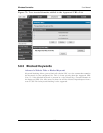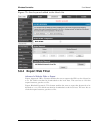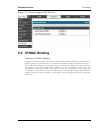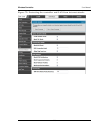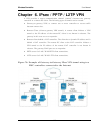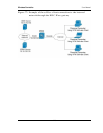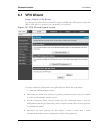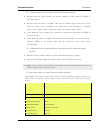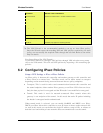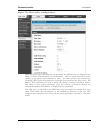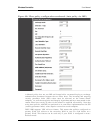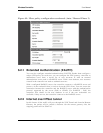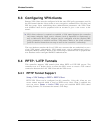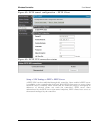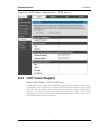
Wireless Controller User Manual
120
2. Configure Remote and Local WAN address for the tunnel endpoints
Remote Gateway Type: identify the remote endpoint of the tunnel by FQDN or
static IP address
Remote WAN IP address / FQDN: This field is enabled only if the peer you are
trying to connect to is a Gateway. For VPN Clients, this IP address or Internet
Name is determined when a connection request is received from a client.
Local Gateway Type: identify this controller‘s endpoint of the tunnel by FQDN or
static IP address
Local WAN IP address / FQDN: This field can be left blank if you are not using a
different FQDN or IP address than the one specified in the WAN port‘s
configuration.
3. Configure the Secure Connection Remote Accessibility fields to identify the remote
network:
Remote LAN IP address: address of the LAN behind the peer gateway
Remote LAN Subnet Mask: the subnet mask of the LAN behind the peer
Note: The IP address range used on the remote LAN must be different from the IP
address range used on the local LAN.
4. Review the settings and click Connect to establish the tunnel.
The Wizard will create an Auto IPsec policy with the following default values for a
VPN Client or Gateway policy (these can be accessed from a link on the Wizard
page):
Parameter
Default value from Wizard
Exchange Mode
Aggressive (Client policy ) or Main (Gateway policy)
ID Type
FQDN
Local WAN ID
wan_local.com (only applies to Client policies)
Remote WAN ID
wan_remote.com (only applies to Client policies)
Encryption Algorithm
3DES
Authentication Algorithm
SHA-1
Authentication Method
Pre-shared Key
PFS Key-Group
DH-Group 2(1024 bit)
Life Time (Phase 1)
24 hours
Life Time (Phase 2)
8 hours



